
The stars have always been part of human culture. From motifs on Greek pottery to van Gogh's Starry Night painting, the connection is evident across the globe. But today, there are few people who get to experience what our forebears saw every night in the sky, researcher Christopher Kyba tells me.
"If you went outside at night you would have had the whole cosmos staring down at you - this really difficult to understand thing," says Kyba.
"From my experience with stars, it makes you quite reflective. It changes how you think - this confrontation with awe." The light pollution from humanity's use of lights at night is reducing the number of stars we can see.
Year on year it worsens, threatening our connection with the night sky, not to mention the implications for astronomy, wildlife, health, the climate and energy wastage.
To the human eye, the night sky is brightening by about 10 per cent a year, according to a recent study in Science by Kyba, a physicist at Ruhr University Bochum, Germany, and his colleagues.
At this rate, a child born in a location where 250 stars are visible at night would only be able to view 100 by the time they reach adulthood at 18. "That's a really fast and dramatic change," says Kyba.
He and his colleagues attribute this decrease in star visibility to 'skyglow' - an artificial twilight caused by streetlights, LED signs and residential lighting, scattering off molecules in the atmosphere. While most of this light escapes into space, some of it bounces back down towards Earth.
Measuring the dark
Dit verhaal komt uit de June 2023 editie van BBC Sky at Night Magazine.
Start your 7-day Magzter GOLD free trial to access thousands of curated premium stories, and 9,000+ magazines and newspapers.
Al abonnee ? Inloggen
Dit verhaal komt uit de June 2023 editie van BBC Sky at Night Magazine.
Start your 7-day Magzter GOLD free trial to access thousands of curated premium stories, and 9,000+ magazines and newspapers.
Al abonnee? Inloggen
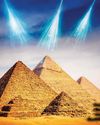
Putting cosmic rays to work
These penetrating interstellar particles have applications from astronomy to archaeology
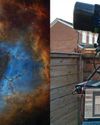
Set up your first imaging sequence
How to automate and coordinate your gear over multiple nights of imaging

The Universe without gravity
Life with no gravity might sound a fun idea, but as Govert Schilling explains, shutting off this pivotalforce would spell disaster for Earth and beyond
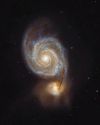
How to blend images taken with different camera setups
Combine data captured at varied focal lengths to create rich, deep images

INSIDE THE SKY AT NIGHT
Back in September 2021, The Sky at Night show spoke to Carly Howett about NASA's then upcoming Lucy mission. As the spacecraft now approaches its main targets - the Trojan asteroids - we check in with her to see how the mission is going

The science of SCI-FI
We love a good sci-fi film, but do they get the science right? Amy Arthur picks six of the big mistakes made in space films

Seeing in a new light
It's National Astronomy Week this month, so take a tip from Mark Westmoquette and let mindful stargazing change your perspective on your life and problems
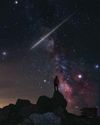
What to do if you find a meteorite
Ever come across an unusual rock and wondered if it's a meteorite? Mark McIntyre explains how to tell if that stone really is a fragment from outer space
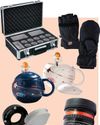
GEAR
Charlotte Daniels rounds up the latest astronomical accessories
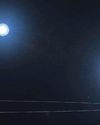
Q&A WITH A STELLAR ECLIPSE SPECIALIST
Many stars are gravitationally locked inside multi-star systems, but a rare new triple-star system has set a new record for how cosy these clusters can get
